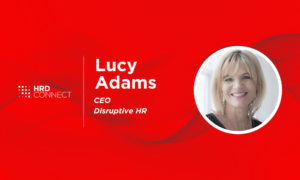COVID-19: How is the talent space changing and how can HR plan for it?
- 5 Min Read
Regardless of how the working world will look in the aftermath of COVID-19, a major shift in the talent space is to be expected. To deal with this change, HR must be more vigilant than ever before in structuring retention and acquisition plans. We took a closer look at the change we have seen so far and how it can be dealt with.
- Author: Sam Alberti
- Date published: May 26, 2020
- Categories

Whilst much uncertainty surrounds the dynamic of the working world in years to come, one thing is for certain: seismic change is on the horizon.
Time will tell exactly what this means, but when it comes to the talent space in particular, leaders will undoubtedly have to roll with the times and adapt their approach.
Of course, this is a multi-dimensional area, and therefore will require structured, cohesive planning.
Ultimately, leaders will have to ensure that, despite the disruption, they continue to retain and attract the best talent possible in order to create a harmonious and productive working environment.
Navigating this space post-pandemic will be a new challenge in and of itself, so we looked into this topic further to decipher the best course of action for HR and business leaders.
How has the challenge evolved?
Firstly, it is important to acknowledge exactly how COVID-19 has (and may continue to) disrupt the talent space for organisations.
When it comes to retention, there are two key factors impacting this area: Furloughed workers as a result of lost revenue, and a general downturn in employee engagement.
Whilst the temporary loss of some employees is not a disastrous scenario, time will tell how serious an issue this becomes for organisations.
The UK’s furlough scheme, for example, is due to expire in October. If organisations are not financially poised to keep their workforces intact at this point, key talent may be lost.
As things stand, figures show that 23% of the UK’s workforce has been placed on furlough, equating to over six million employees.
As for engagement, the significance of this will become particularly clear in the aftermath of the pandemic.
The return to ‘ordinary’ working life will be an opportunity for employees to look back and think: ‘what did my organisation do for me during that time’?
At this point, with the stagnancy of the job market beginning to fade, these employees will once again have the means to depart the organisation if they see fit.
What’s more, the proposal that this could happen is not at all unfounded. To cite just one example, a Human Capital Institute study found that disengaged employees are 87% more likely to leave an organisation than their engaged counterparts
Now is a crucial time for employers to prevent this from happening.
Of course, acquisition is an equally significant concern. In fact, global talent shortages were already reported to be at record highs prior to the pandemic, with 54% of companies complaining of not being able to find enough skilled applicants to meet demand. The current scenario may complicate this even further.
To a large degree, however, acquisition plans will be affected by the same factors that impact retention.
So, with the competition stiffer than ever before, this period should be viewed as an opportunity for organisations to strengthen their employer branding and make it known that they can offer a high-quality, prosperous experience to employees.
Not only will this help to retain existing talent, but will also go a long way in attracting new employees.
What can be done?
This idea of strengthening employee experience to the greatest extent possible is undoubtedly crucial.
In the new, post-pandemic world of work, employers must incorporate this as a core element of retention and acquisition strategy on a level that has scarcely been seen before.
And with much of the world’s workforce currently operating remotely, the key element of this is clear: make remote working the most engaging and enjoyable experience possible.
Company purpose is key here. In addition to a lack of co-location, organisations are struggling due to the disruptive period. For this reason, it can be easy to lose sight of the organisation’s core aims and values.
Communicating this purpose to employees and making it clear at every possible opportunity is likely to have a marked impact on engagement and ultimately retention.
One study even found that 73% of employees who say they work at a “purpose-driven” company are engaged, compared to just 23% of those who don’t.
Most importantly, however, the process of bolstering employee experience will involve particularly high levels of communication and transparency between leaders and employees, and across the company as a whole.
HRD Thought Leader Katrina Collier offered her take on this in a recent interview with HRD Connect.
“Transparency is reigning supreme to keep employees engaged and attract new recruits in the future,” she said.
“There has scarcely been a better time for leaders to develop better communication.”
This view is difficult to contest. One study even found that 66% of those who plan to leave their organisations also reported ineffective communication in the workplace.
Leaders frequently checking in with their teams and showing a newfound level of transparency, compassion and vulnerability will go a long way in terms of keeping current employees engaged and getting new talent through the door further down the line.








